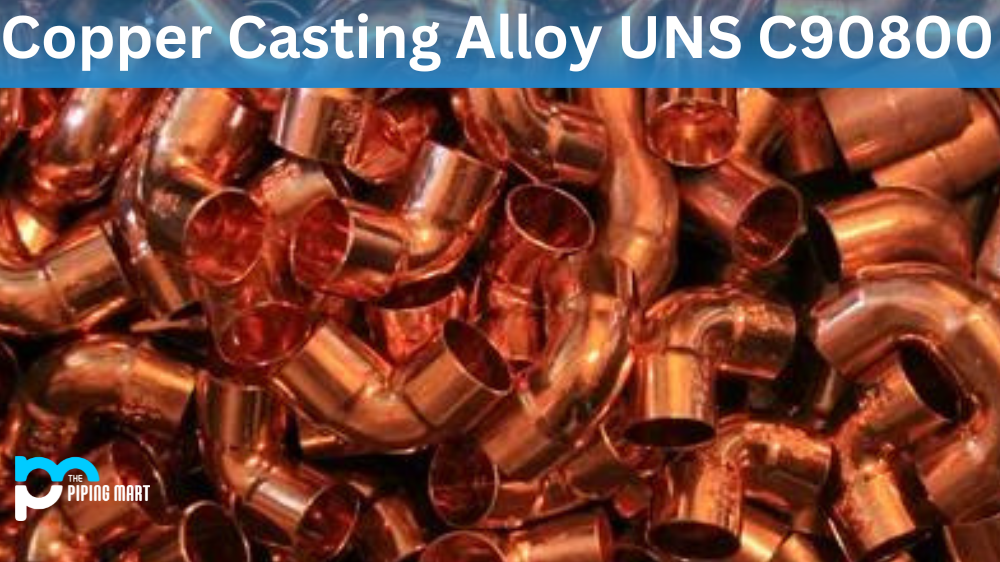Nitronic 50, also known as UNS S20910, is austenitic stainless steel with high Nitrogen, chromium, and molybdenum levels. This alloy exhibits superior mechanical and physical properties over standard austenitic alloys. Nitronic 50 is ideal for severe service conditions due to its excellent resistance to wear, galling, and corrosion. Nitronic 50 has excellent mechanical properties, making it a perfect choice for applications requiring strength, flexibility, and toughness. This blog post aims to detail the composition, properties, uses, and applications of Nitronic 50.
Nitronic 50 Composition
Nitronic 50 composition consists of 20-22% chromium, 11-13% nickel, 4-6% manganese, and 1.5-3% molybdenum. Adding Nitrogen (0.20-0.30%) imparts superior mechanical and physical properties to the alloy. Nitronic 50’s chemical composition makes it an attractive option for designers and engineers.
| Element | Content (%) |
|---|---|
| Chromium, Cr | 20.5-23.5 |
| Nickel, Ni | 11.5-13.5 |
| Manganese, Mn | 4-6 |
| Molybdenum, Mo | 1.5-3 |
| Silicon, Si | 1 |
| Nitrogen, N | 0.2-0.4 |
| Niobium, Nb | 0.1-0.3 |
| Vanadium, V | 0.1-0.3 |
| Carbon, C | 0.06 |
| Sulfur, S | 0.03 |
| Iron, Fe | Balance |
Nitronic 50 Mechanical Properties
Nitronic 50 exhibits excellent mechanical properties, such as high tensile strength (800-1000 MPa), good yield strength (minimum 550MPa), and a low coefficient of thermal expansion. Nitronic 50’s properties make it ideal for high strength and fatigue resistance applications, such as springs, automotive engine components, and fasteners.
| Properties | Metric | Imperial |
|---|---|---|
| Tensile strength at break | ≥ 689 MPa | ≥ 100000 psi |
| Yield strength | ≥ 379 MPa | ≥ 55000 psi |
| Elongation at break | ≥ 35% | ≥ 35% |
Nitronic 50 Physical Properties
Nitronic 50 provides excellent physical properties, such as high electrical conductivity, low permeability to electromagnetic fields, and good thermal conductivity. Nitronic 50 is ideal for applications that require electrical insulation and thermal conductivity.
| Properties | Metric | Imperial |
|---|---|---|
| Density | 7.89 g/cm3 | 0.285 lb/in3 |
Nitronic 50 Thermal Properties
| Properties | Metric | Imperial |
|---|---|---|
| Thermal expansion co-efficient (@25.6-93.3°C/78-200°F) | 16.2 µm/m°C | 9 µin/in°F |
Nitronic 50 Equivalent
Other designations that are equivalent to nitronic 50 alloy include the following:
| ASTM A182 (XM-19) | ASTM A269 (XM-19) | ASTM A412 (XM-19) |
| ASTM A193 (B8R, B8RA) | ASTM A276 | ASTM A479 (XM-19) |
| ASTM A194 (B8R, B8RA) | ASTM A312 (XM-19) | ASTM A580 (XM-19) |
| ASTM A240 (XM-19) | ASTM A336 (XM-19) | ASTM A813 (TP XM-19) |
| ASTM A249 (XM-19) | ASTM A403 (XM-19) | DIN 1.3964 |
Nitronic 50 Uses
Nitron 50 finds extensive use in industries, including marine, aerospace, automotive, chemical plants, medical devices, and oil and gas. Nitronic 50 is extensively used in applications such as shafts, fasteners, gears, rollers, pump parts, and valves. Nitronic 50 can replace high-priced alloys such as hastelloy, monel, and incoloy in various applications, thereby reducing costs.
Nitronic 50 Corrosion Resistance
Nitronic 50’s resistance to corrosion makes it a go-to alloy for harsh environments. The alloy exhibits good corrosion resistance in chloride, hydrogen sulfide, acid, and alkaline environments. It is resistant to pitting, crevice corrosion, and general corrosion in seawater.
Nitronic 50 Heat Treatment
Nitronic 50 can undergo annealing processes, such as solution annealing, which relieves stress or strain hardening and enhances its elasticity. After solution annealing, a quenching process is carried out, followed by ageing. Nitronic 50’s heat treatment ensures that it attains the correct mechanical properties.
Nitronic 50 Machining
Nitronic 50 is a challenging alloy to machine and requires the right conditions to achieve the required specifications. Effective cooling, sharp cutting tools, and low cutting speeds are necessary conditions to consider when machining Nitronic 50. Nitronic 50 is more challenging to machine than conventional stainless steel alloys, but the capability to achieve high tolerances and finishes compensates for this.
Nitronic 50 Welding
Nitronic 50 welds well using various methods, such as gas tungsten arc welding (GTAW), shielded metal arc welding, and gas metal arc welding. Nitronic 50’s welds exhibit good mechanical and corrosion properties. Nitronic 50’s low carbon content ensures that it exhibits low intergranular corrosion susceptibility.
Conclusion
Nitronic 50 is a unique alloy known for its excellent mechanical and physical properties combination. Its superior corrosion resistance is ideal for critical applications in demanding environments such as oil and gas, chemical plants, and oceanfront facilities. Engineers and designers continue leveraging Nitronic 50 to transform our lives and work.

Pipingmart is a B2B portal that specializes in metal, industrial and piping items. Additionally, we share the latest information and information about materials, products and various types of grades to assist businesses that are involved in this business.




